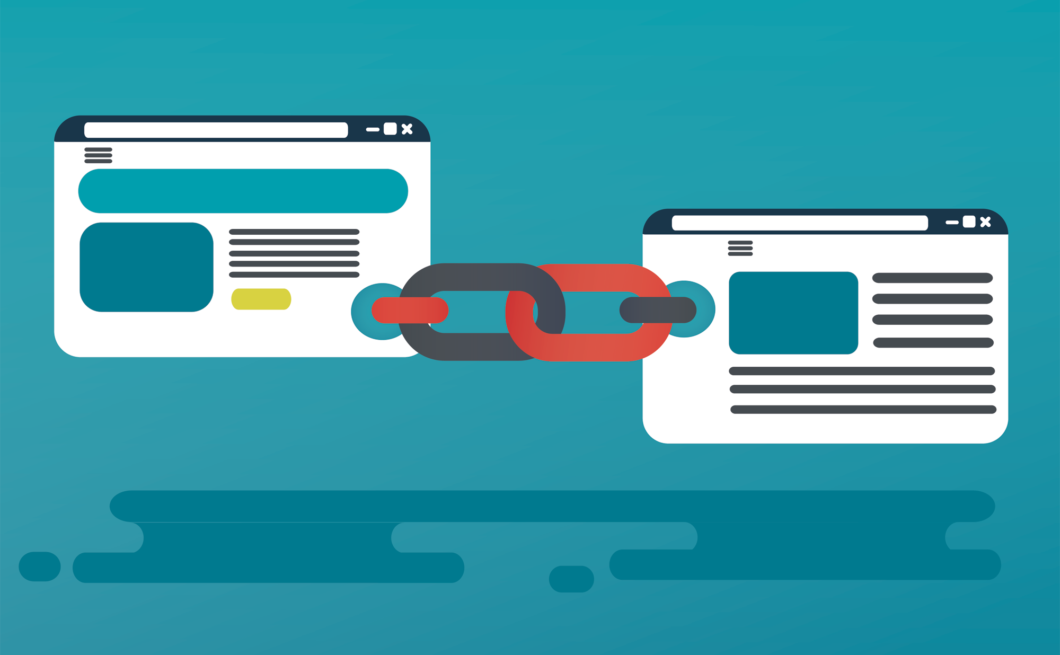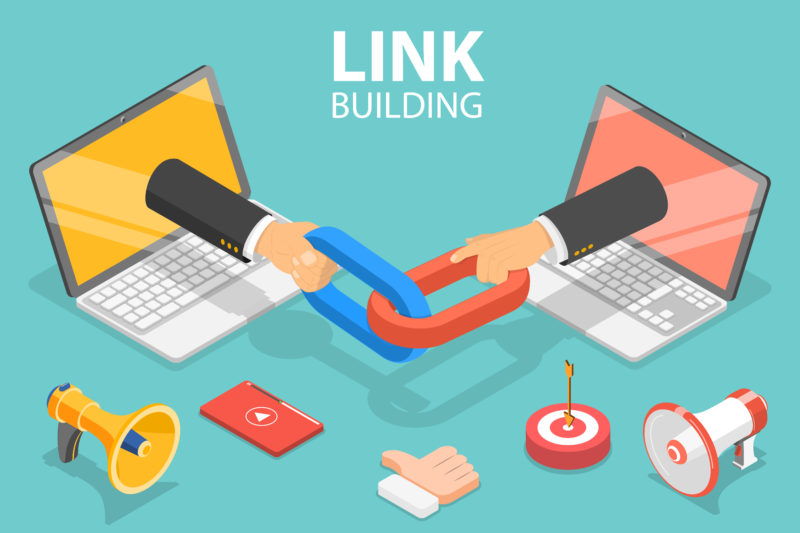01.30.21
Link Building Strategy for Beginners

Whether you’re a new or experienced website owner, search engine optimization (SEO) may be a bit tricky, but always essential. And 1 common question among those hoping to improve their SEO strategy centers around getting backlinks to your website.
Backlinks help visitors find your website on search engines like Google and Yahoo! Not only are backlinks crucial to getting your website seen, but they also establish network connections that build website authority.
We’re going to breakdown the link building strategy and how it can help take your site from virtually unknown to the top of the search results.
What Is a Backlink
In SEO, backlinks are the focal point of a marketing structure known as “link building”. Link building is the process of getting other websites to link to your website’s pages, which in turn raises your search engine rankings. Backlinks themselves are those external links that connect to your site.
Why is link building so effective? Well, search engines crawl websites and identify links between different sites. If one of your pages has links from credible sources, Google is more likely to show your page higher in search results.
Credibility is a key part of a link building strategy. Search engines value quality links, and they can easily spot spam-based or less valuable ones. There are hundreds of ways people incorporate link building into their content strategy and promotions, and while it may seem challenging, it’s actually easier than you think. We can’t stress enough that the key to effective link building comes with using trusted sites that have built enough site authority that linking to them will benefit your overall content.
So far we’ve discussed what a backlink is and how link building can be beneficial to helping your ranks on Google. However, in order to further understand why backlinks are important, let’s breakdown the anatomy of a hyperlink and how search engines use them.
The Parts of a Hyperlink

- Start of the link tag. This can be referred to as an anchor tag because it opens the link tag and tells search engines that a link to another website is about to follow.
- Link referral location. The “href” stands for “hyperlink referral,” and the text inside the quotation marks indicates the URL to which the link is pointing. It may not always be a web page; it could also include the address of an image or a file to download.
- Visible/anchor text of the link. This is a little bit of text that users see on the page, and what they need to click if they want to open the link. The text is usually formatted to make it stand out from the text that surrounds it, which can appear as the color blue, and/or feature underlining which lets users know it’s a clickable link.
- Closure of the link tag. This signals the end of the link tag to the search engines.
Everything can always be a little simpler once we break it down. We’ve deconstructed what a backlink is and how a search engine views it, let’s move on to why backlinks are important to your website.
Why Backlinks are Important
After a search engine crawls web page content and indexes it, it decides how much quality content is on the page. Naturally, Google ranks quality content higher in search results. When it comes to backlinks, Google isn’t necessarily looking at the quality of your content, but instead, the credibility. In short, Google identifies and uses backlinks to do 2 simple things:
- Help visitors discover new web pages
- Determine the ranking of a website for different search queries
Benefits of Backlink Building
Apart from the obvious ranking benefit, the process of backlink building offers a few great ways for your business to grow. Here are a few returns you might see along your link building journey:
- Developing Your Brand. There’s nothing more important to growing and expanding your audience than honing on your brand development. Building out a good link strategy can help establish your professional authority in your industry or niche. As you create content for your website and start publishing widely, you have the opportunity to become well known by showing your expertise which can help establish credibility with your audience.
- Creating Network Relationships. Relationships are everything both on and offline. Creating professional and personal relationships can strengthen your link building efforts by providing mutually beneficial backlinks. When you outreach to fellow industry professionals, bloggers, and journalists and request that they share your link, you are providing the space for you both to accomplish a common goal. These can become invaluable relationships as you grow within the online world. By building long-term relationships, you can position your business as a trustworthy entity.
- Increasing Referral Traffic. I’ve previously mentioned how vital backlinks can be for online visibility and rankings, but did you ever wonder what the impact of those links are? A good link from a trusted and high-quality website can increase your web traffic drastically. Referral traffic can have the power to increase your sales and give your web presence a massive boost in engagement.
Backlinks can be extremely beneficial to building your online presence, but no two backlinks are the same. As you get more comfortable getting backlinks, you’ll become more confident, knowing which ones will help and which ones will hurt your rankings.
Types of Backlinks
We can’t say it enough, quality links are a must. The success of your content strategy is contingent on not only how you use backlinks, but the type of backlinks you select. Google is very selective about the types of links it scans for on your website. If they find low-quality or spammy backlinks, your rankings can suffer as well. Let’s break down a few of the backlinks you can use to help build your ranking and where to focus your efforts.
“Natural” — Editorial Links
These are the most popular links for helping to build your SEO because you don’t have to email the owner of the link in order to use them. These are given “editorially” by other website owners and should be used strategically within relevant content you have on your site. While it can be time-consuming to identify the correct bloggers or articles that would be good for your content, Google loves them!
Outreach Link Building
If you’re just starting to build your online presence, this is one of the most popular ways to start your link-building strategy. To be upfront, this may require some leg work. You’ll need to reach out to website owners and bloggers, and request backlinks from them. One of the key factors of this outreach process is giving that person the incentive and interest to link to your site. If you are contacting people within your industry who you may not have a personal interest in, include your metrics and analytics in order to show how mutually beneficial the link exchange will be. People love numbers and metrics can be the deciding factor between a “yes” or “no”.
We’ve broken down what a backlink is, why they are important, and the types of backlinks you should and shouldn’t use in your content. Now is the time to put it all together and get the link building process started.

Executing a Link Building Strategy
Link building may sound like an uphill battle, but there are several ways for you to move forward. Now that we’ve covered the essentials of backlinks, it’s time to get started!
Internet Directories
This may sound like a no-brainer, but the world wide web is indeed your oyster while you are building your links. The internet is full of free directories that can help you find websites based on your industry or niche. You can submit your own URL for approval on these directories. After your link is approved, you’ve successfully created your first backlink. Feel free to locate directories that are best suited to your industry with a quick web search on Google.
Article Directories
Remember the directories that we mentioned earlier? Well, you can contribute your unique content to the directories and get them published within the site’s directory. This is a perfect opportunity for thousands of users on the directory to see your site. There are hundreds of directories online, so make sure you are researching directories that are relevant to your site.
Reach Out to Influencers
A fantastic aspect of social media is that it’s created its own hub of influencers that fit every industry and niche. There is literally an influencer for everything. You can tap into the power of influencers by researching and compiling the top 10-15 that would make great link partners. Free online tools like BuzzSumo can help you find influencers. Or if you prefer, you can search through hashtags or other filters on social networks. You can also directly identify influencers in your industry using a professional social networking platform like LinkedIn.
Identifying Broken Links
Identifying broken links is a great way to build relationships while getting your business the recognition it deserves. If you are wondering what a broken link is, don’t worry; it’s not as weird as it may sound. We’ve all seen broken links, whether they appear as a 404 page or a dead page. They often frustrate the visitor, who came to shop or learn about something specific. The key to this tactic is identifying high-value content with broken links, emailing the author, and offering your link as an alternative. If your page is similar to the broken link, the proposition can be mutually beneficial.
Check For Unlinked Brand Mentions
There is nothing worse than a missed opportunity when it comes to brand visibility. As your online presence grows, you’ll begin to see an increase in where you are mentioned online and on social media. The critical part of these mentions is that you are able to identify whether they have the potential to include a backlink. Using a brand monitoring tool like Hootsuite or Sprout Social is a great way to scan social media and the website for any mentions of your business. Once you’re able to identify missing links, you can contact webmasters, journalists, bloggers, etc. who have mentioned and request that they add your link.
We’ve covered all the fundamentals! You should be all set to start building backlinks for your website and your content. Remember that building the relationships, rankings, and process that works best for your linking strategy takes time. Best of luck in your backlink journey!